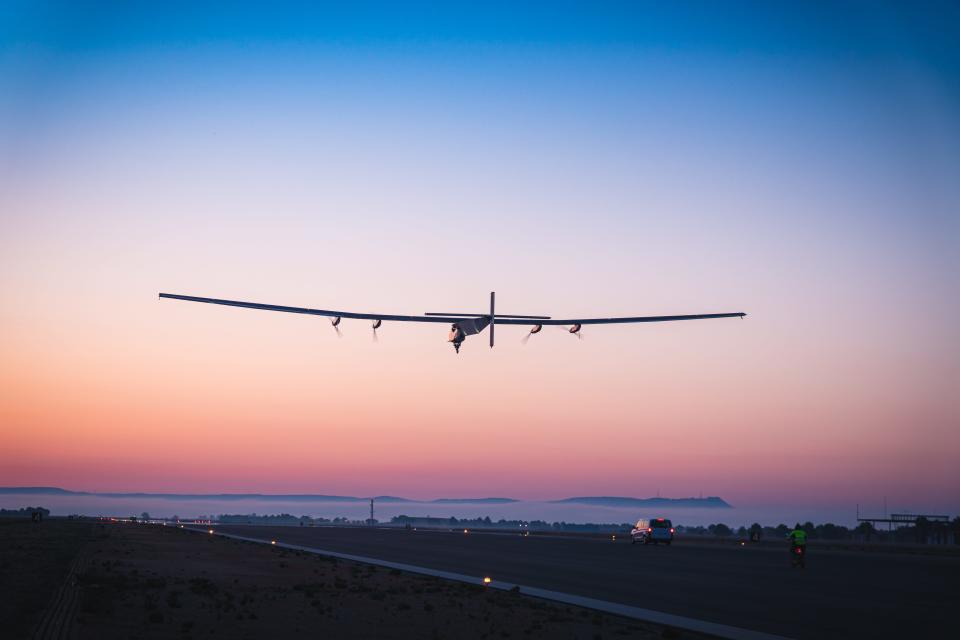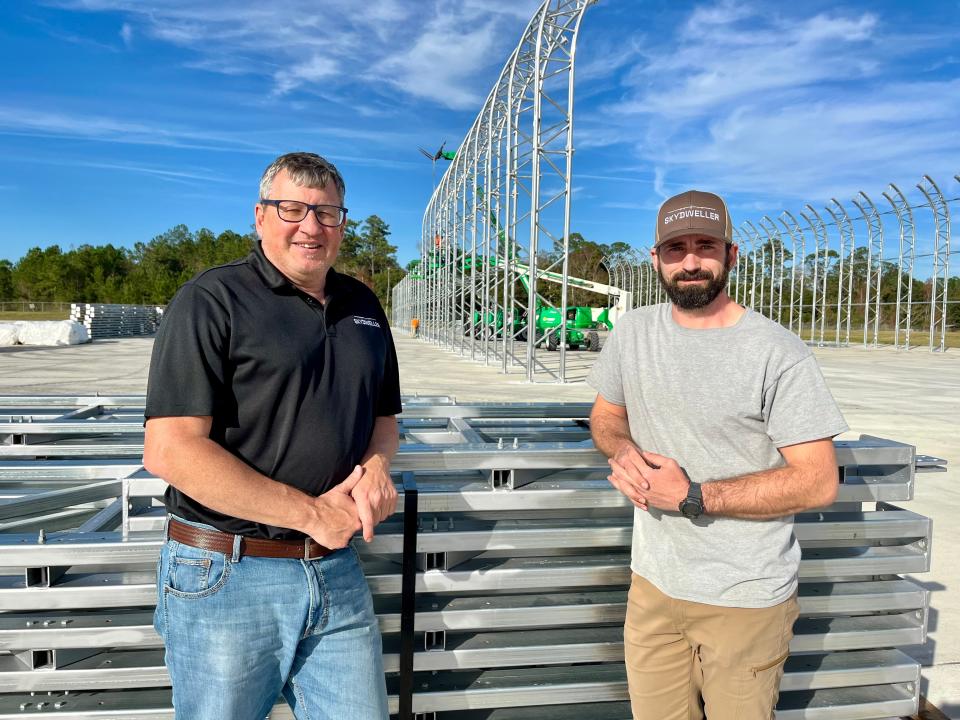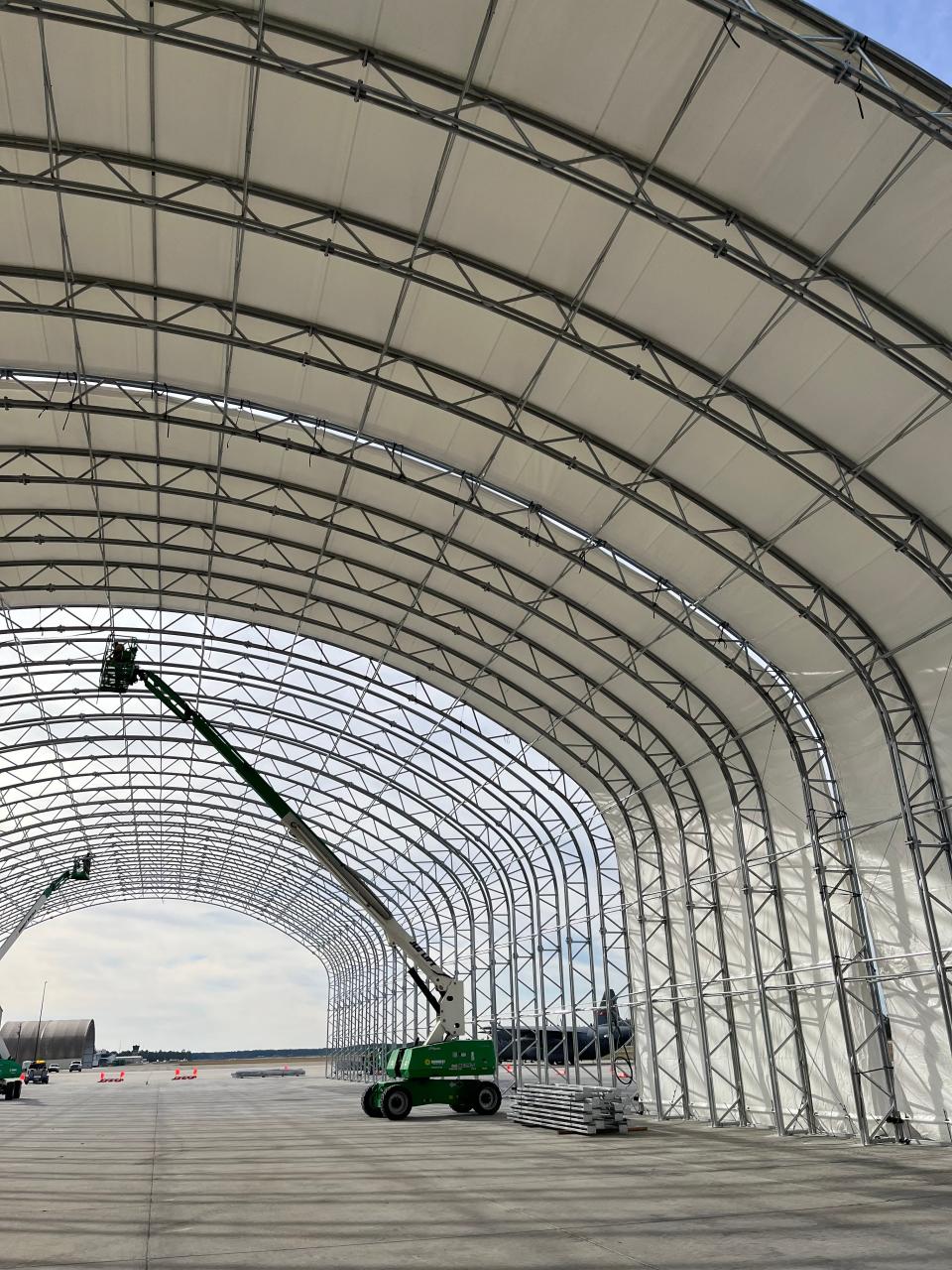New aerospace company investing in Stennis Airport operations. What to know
On the north end of the runway at Stennis International Airport workers from a Florida construction company are completing assembly of a huge hangar that will temporarily house a history-making aircraft arriving early next year.
The aircraft, Solar Impulse 2, made the first unmanned around-the-world flight powered solely by energy from the sun. Its owner is Skydweller Aero, a startup aerospace company with headquarters in Oklahoma City and a design center in Spain that is investing $15 million in its new Mississippi location.
“What we’re setting up (at Stennis) is our first operations base,” said David Tyler, operations director. “We’re bringing the aircraft over from Spain and it’s going to be operating from here.”

Skydweller is 71-feet long, has a wingspan of 236 feet, larger than a 747 jumbo jet, and weighs about 5,000 pounds, similar to an average car or truck, thanks to the lightweight composite materials used in its construction.
It will arrive at Stennis in January packed inside a 747 and be reassembled in the new hangar by workers from Skydweller’s Spanish operations center alongside newly hired local technicians. The aircraft will then be prepared to fly over the Gulf of Mexico and beyond, proving its value to potential commercial and military customers.
“The aircraft will be here in the new year and will be in the air before March,” Tyler said. “This aircraft has flown around the world already, the longest leg from Japan to Hawaii and is a proven game changer.”
The new class of unmanned aircraft that Skydweller is designing can fly missions of 24 hours or longer, reach altitude of 38,000 feet and carry payloads weighing up to 500 pounds for intelligence and surveillance operations, communications, environmental mapping and natural disaster support.
“They can fly 24/7, 365 days and provide coverage for radar, or cameras for the military,” Tyler said. “All the flights will be unmanned and controlled from the ground at Stennis and in Spain.”

Hancock County’s coastal location was a major selling point, Tyler said.
“When you take off, you are very quickly over the Gulf of Mexico,” he said.
Access to the Gulf is key for Skydweller’s main customer, the U.S. Navy, which awarded the company a $5 million contract to demonstrate the capabilities of its unmanned vehicles. From Stennis, Tyler said, “You can go anywhere in the world.”
The company expects to eventually house a fleet of solar-powered aircraft, and invest around $40 million at Stennis. Hiring is underway to fill at least 36 new jobs. Company and airport officials said the company’s operations could attract aircraft manufacturing to the area.
Airport director Austin Jenkins said Skydweller’s arrival at Stennis is good for the Mississippi Gulf Coast and specifically the Hancock County economy with the addition of approximately 35 jobs long term once test operations are underway.
The company is “in the forefront of technology,” converting a manned aircraft to unmanned operations and using composite materials for construction that allow it to carry heavier payloads, he said. “It is our desire to be innovative and at the forefront of the new aviation technologies and we hope that Skydweller’s operations continue to spur additional interest and growth at the Stennis International Airport.”
Tyler, who is a former British Army officer, said in addition to the hangar construction, his focus is on hiring and training workers for cutting-edge jobs.

“We are just starting to post jobs,” he said. “We are trying to recruit electronic and avionic technicians and we have a senior engineer coming here from Georgia.”
The first locally hired technician traveled to Spain to train and help prepare the aircraft from its flight to Stennis.
“By the end of January we will have 10 and 15 permanent employees,” he said. The business development manager transferred from Spain to work at Stennis.
The company is working closely with some of the state’s colleges and universities to help train employees working with newer composite materials instead of more traditional metals.
“We are working with Pearl River Community College to establish a composite engineering tech course because that skillset is not very much available in this area or worldwide,” Tyler said. “Companies are moving away from aircraft metal to composites.”
Tyler is also working with Mississippi State University and the University of Southern Mississippi to set up training programs for the specialized jobs that Skydweller will bring to Hancock County. AccelerateMS also is assisting with workforce training.
This article originally appeared on Mississippi Clarion Ledger: New aerospace company investing in Stennis Airport operations MS coast

